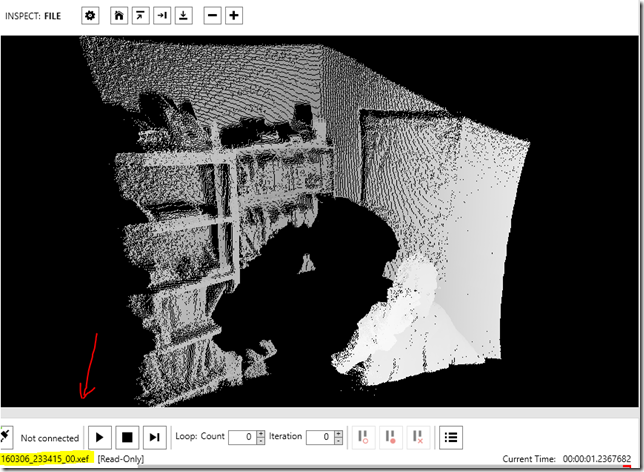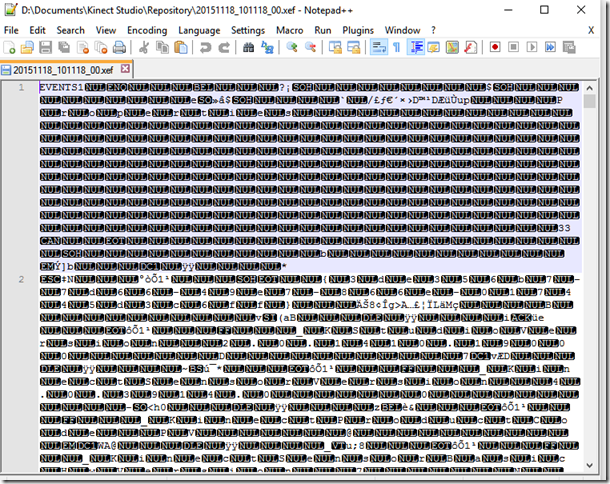[Update 4/23 – this turns out to be just a re-appropriation of an extension name. Kinect studio doesn’t recognize the HoloLens XEF format and vice-versa.]
The HoloLens documentation reveals interesting connections with the Kinect sensor. As most people by now know, the man behind the HoloLens, Alex Kipman, was also behind the Kinect v1 and Kinect v2 sensors.
One of the more interesting features of the Kinect was its ability to perform a scan and then play that scan back later like a 3D movie. The Kinect v2 even came with a recording and playback tool for this called Kinect Studio. Kinect Studio v2 serialized recordings in a file format known as the eXtended Event File format. This basically recorded depth point information over time – along with audio and color video if specified.
Now a few years later we have HoloLens. Just as the Kinect included a depth camera, the HoloLens also has a depth camera that it uses to perform spatial mapping of the area in front of the user. These spatmaps are turned into simulations that are then combined with code so that in the final visualization, 2D apps appear to be pinned to globally fixed positions while 3D objects and characters seem to be aware of physical objects in the room and interact with them appropriately.
Deep in the documentation on the HoloLens emulator is fascinating information about the ability to play back previously scanned rooms in the emulator. If you have a physical headset, it turns out you can also record surface reconstructions using the windows device portal.
The serialization format, it turns out, is the same one that is used in Kinect Studio v2: *.xef .
An interesting fact about the XEF format is that Microsoft never released any documentation about what the xef format looked like. When I open up a saved xef file in Notepad++, this is what it looks like:
Microsoft also never released a library to deserialize depth data from the xef format, which forced many people trying to make recordings to come up with their own, idiosyncratic formats for saving depth information.
Hopefully, now that the same format is being used across devices, Microsoft will be able to finally release a lib for general use – and if not that, then at least a spec of how xef is formed.



